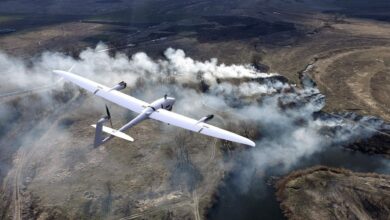The UK on Monday unveiled a futuristic army strategy that includes Challenger 2 tanks equipped with tiny bug-like drones and a remote-controlled unmanned vehicle.
The explosive-laden drone, The Bug, weighs less than 200 grams and can track vehicles by flying up to 50 miles per hour (around 80 kilometers per hour), blow open doors, and conduct surveillance.
The unmanned vehicle, named The X3, meanwhile, can confront the enemies instead of the troops and send live footage back to the troops through the cameras fitted in it.
The X3 has a speed of 20 kilometers per hour (12.4 miles per hour) and is equipped with speakers to distract the enemies, the Telegraph reported.
It can travel up to two kilometers but can be linked with other vehicles to relay information along a chain up to 24 kilometers (15 miles) long, the paper added.
The drone and the vehicle are linked with a mobile-like device, called the Android Team Awareness Kit (Atak), positioned on the chest of a soldier who can control them from afar.
The device also helps the soldiers to see the position of other soldiers while fighting, and help them avoid friendly fire, the Daily Mail reported.
Future Weapons Must Be ‘Threat-Driven’
The system is part of the Ministry of Defence’s Science and Technology strategy that must “ensure that science and technology is at the beating heart of MOD policies and strategies.”
Speaking while unveiling the strategy, Defence Secretary Ben Wallace emphasized the need for new armed forces equipment that is “threat-driven” and better aligned to the UK’s future needs.
“We are in a very real race with our adversaries for technological advantage,” Wallace said, and called for the bridging the divide between “advanced science and technology research, production, scaling, and commercialisation.”
“To succeed, we’re going to have to tap into our brightest brains across the defence industry, academia, and the whole of society,” he added.












